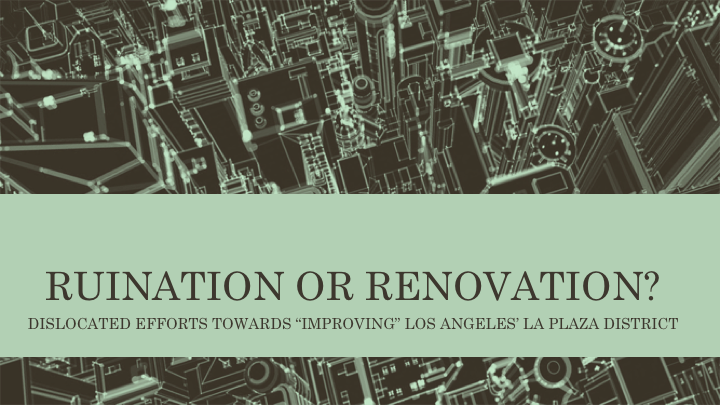As a social and cultural historian of California, I am most drawn to understanding toxicity as an “extremely harsh or harmful quality.” Taking this working definition, it is my goal to analyze Los Angeles’ La Plaza district, also known as El Pueblo de Los Angeles, as a case study for LA and view it as a site of the visible intersections of environmental, cultural, socioeconomic, and urban vulnerabilities. By juxtaposing historical photographs of La Plaza with present-day images, I seek to inject a sociocultural dimension to this project’s exploration of “toxic vulnerabilities.” The central focus of my study explores the communities that are exploited and made the most vulnerable in the face of urban expansion and revitalization.Historically, La Plaza is the site of ethnic and cultural contestation – between indigenous Californians, Spanish and Mexican colonials, American settlers, and Chinese emigrants. Visually, La Plaza is the place of extremes. In 1926, an American “philanthropist” used prison labor to reconstruct Olvera Street to resemble its “authentic Mexican past.” In 1939, Old Chinatown was razed to make way for city’s new transit center, Union Station. In 2017, construction began on a $140 million-dollar luxury commercial-residential complex overlooking the hundreds of homeless residents who call the sidewalks of La Plaza home. I seek to combine these snapshots of such extremes of the everyday life in La Plaza with data visualizations. These latter visualizations will, hopefully, highlight the infrastructural costs of La Plaza’s “renovation,” the environmental risks of the area’s transit expansions, and socioeconomic disparities between La Plaza’s bureaucratic oligarchs and the working-classes and urban poor. Furthermore, montages showing historic photos and images of La Plaza juxtaposed next to their contemporary locations could render such infrastructural and demographic transformations visible.
Description

